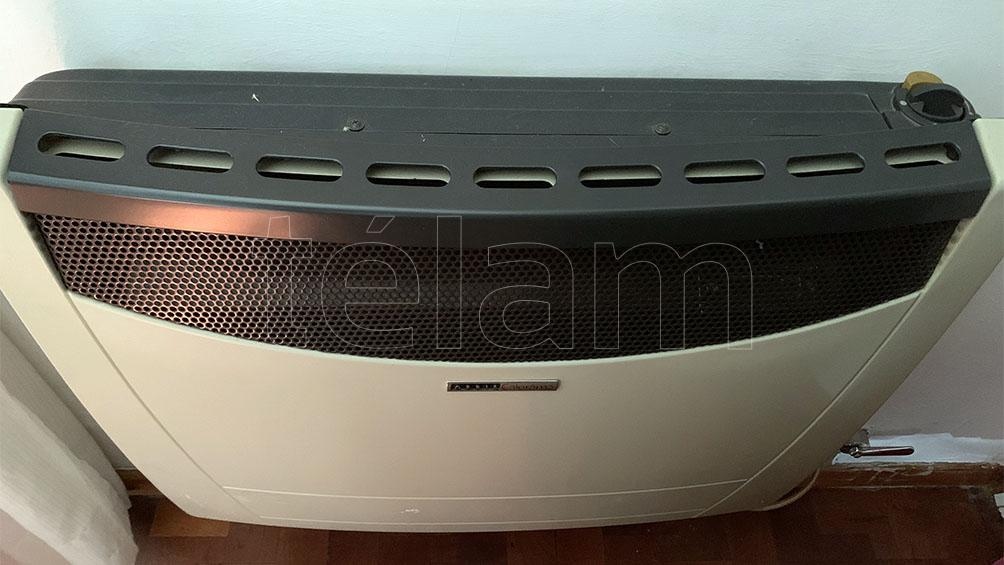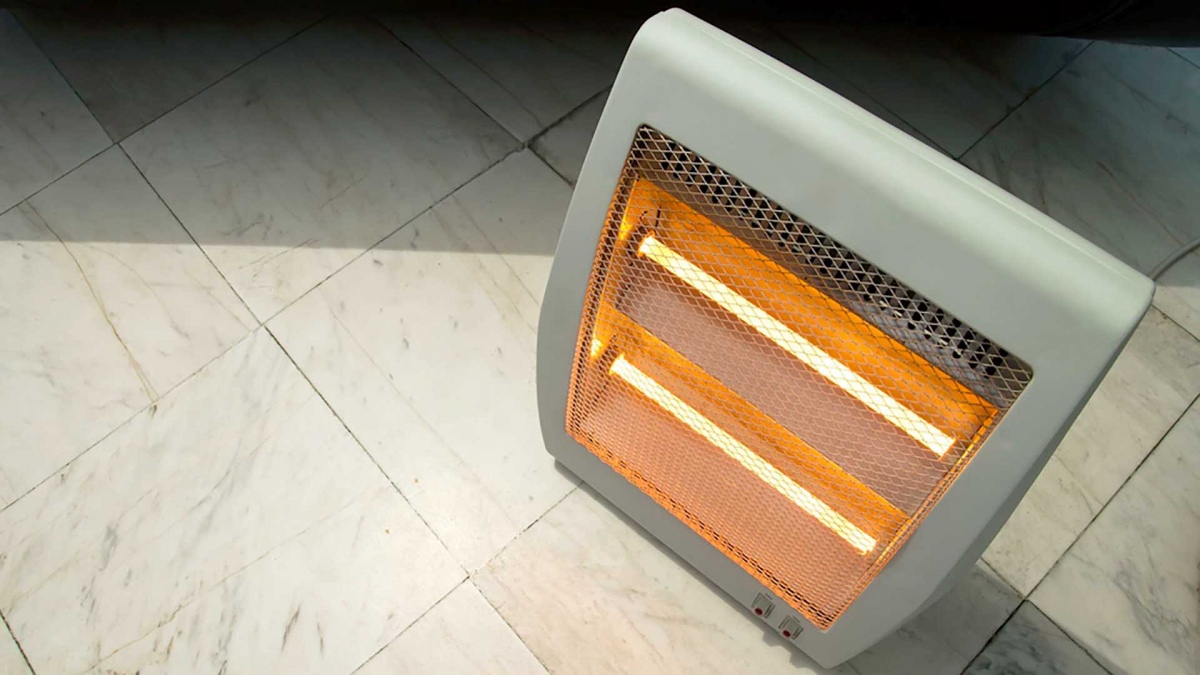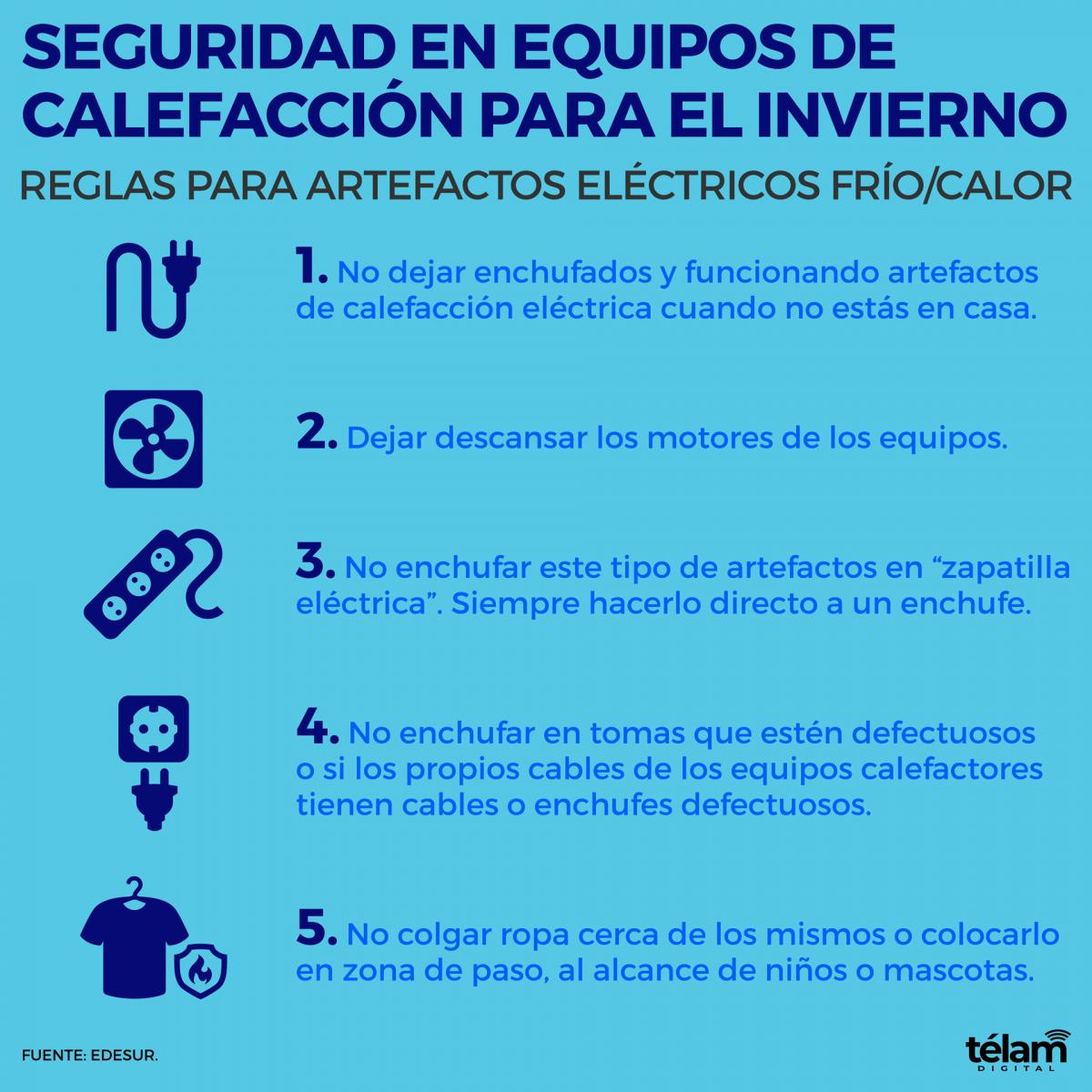 They recommend that a licensed gas fitter check the stoves.
They recommend that a licensed gas fitter check the stoves.
Gas and electric stoves, balanced draft, heaters and hot/cold air conditioners lead the pre-winter sales ranking, however, when choosing them “we prioritize cost over safety, and that can result in irreparable damage” specialized technicians warned this Wednesday.
Télam spoke with experts from the Argentine Institute for Standardization and Certification (IRAM) who develop technical standards for the safe use of various products, and with spokespersons for gas and electricity distribution companies in the City of Buenos Aires in order to investigate what are the security measures, practical recommendations and advice to prevent accidents.
“Controlling gas appliance installations and keeping rooms ventilated are the main measures to prevent carbon monoxide poisoning,” Metrogas said in a statement, on the occasion of the commemoration of Carbon Monoxide Awareness and Prevention Day , this June 21.
“In Argentina, 40,000 cases of carbon monoxide poisoning are reported per year and approximately 200 people die from this cause, totally preventable”said Juan Gabriel Muñoz, a pediatrician consulted by the Metrogas press department.
For this reason, “the best recommendation is to have the devices periodically checked by a registered gas operator.”
In turn, “when purchasing an appliance, it must be verified that it is approved by an official certification body accredited by the National Gas Regulatory Entity (Enargas), and must have the wafer with the rising sun that says Gas attached to it,” they indicated. .
Other tips refer to keeping the rooms ventilated with the compensating grilles, which must be free of obstructions and placed according to regulations; check that the burner flame of the appliances is always blue and that its shape is stable, since if it is yellow, it means that carbon monoxide is being produced, and do not use the kitchen (neither stove nor oven) to heat . And for bathrooms and bedrooms, they recommended installing balanced draft devices.
 In Argentina it is estimated that close to 40% of fires have an electrical origin.
In Argentina it is estimated that close to 40% of fires have an electrical origin.
Regarding electrical safety, a survey of the Association for the Promotion of Electrical Safety (APSE) found that “in Argentina it is estimated that close to 40% of fires have an electrical origin.”
Thus, the Electricity Regulatory Entity (ENRE) and the electricity service distribution concessionaires design campaigns to inform users of a set of safety measures that must be adopted to avoid accidents: do not leave electrical appliances plugged in and running electric heating when we are not in our houses; do not hang clothes near them; avoid placing them in walkways and within the reach of children and pets; Do not plug this type of device into electric shoes but into a wall outlet, since, due to its high consumption, if we plug it in together with other electrical appliances we can cause an overload, short circuit and a start of fire and do not plug electrical electrical appliances or heaters into outlets that are loose, have wires in poor condition or are not suitable for the electrical load they must support.
Between the users and the companies that produce or distribute services, there are public and private organizations that prepare quality standards for products and certify their safety.
IRAM standards
“IRAM is the standardization body of Argentina that, for 88 years, has been preparing and publishing standards that establish the minimum conditions that a product, service or management system must meet in order for it to serve the use for which it is intended,” he said. to Télam, Pablo Paisán, manager of IRAM’s Electrical, Mechanical, Construction and Chemical Standardization Division.
“Products made according to standards are more suitable, safe, of good quality and have information to guide the consumer,” he added.
What is the window of distance between the IRAM regulations and its encounter with the reality of the different users in their various environments? Télam consulted Paisán.
“Users do not have the obligation to know what the heater safety standard says. It is the task of IRAM to disseminate and communicate through the media, and from our own channels, the relevant information in order to contribute to raising awareness and to acquire safe equipment. Ideally, when purchasing a product, users verify that it has the electrical safety certification seal. However, it is not what usually happens, and the problem is that the lowest cost (such as a misunderstood economy) is prioritized over security, and this can result in irreparable damage,” he explained.
IRAM standards are voluntary, and only in cases where the State intervenes, can they become mandatory.
A typical case is when standards are used to support public policies.
Although the normalization task that IRAM develops as a private organization, is of public good; it is the State that must intervene making compliance with a standard mandatory, both for users and for producing and distributing companies.

A public policy of the Argentine State, for example, is that all electrical appliances certify their safety conditions. Something similar happens with energy efficiency labels.
For the State, in this case, it is a public policy to save energy and promote its efficient use, so it uses the IRAM standards to evaluate the consumption of this type of device.


